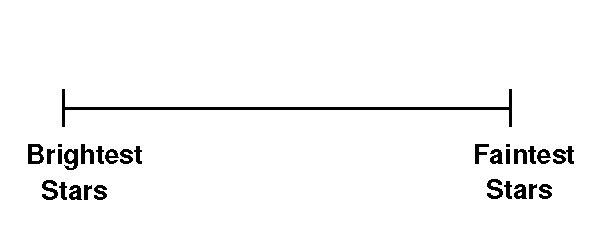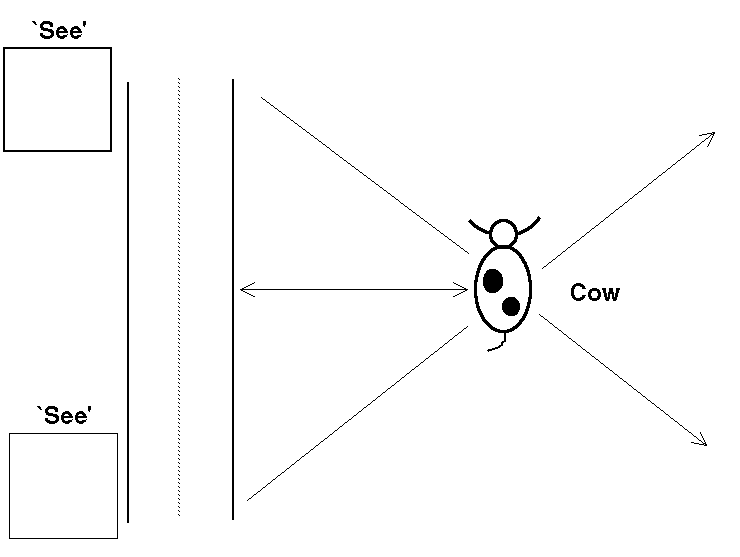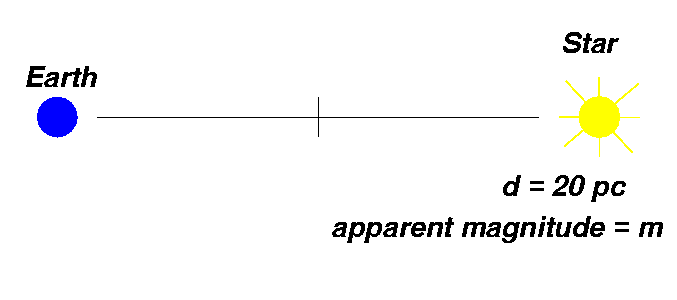Twinkle Twinkle Little Star . . .
Can We Determine What (and Where) You Are?
In this lecture and the next, we shall attempt to understand how
the various properties of stars are determined. Stars are so incredibly
far away compared to the planets that even the largest telescopes can't
resolve them *, i.e. they appear as points of light in any telescope. You
might wonder then how we can determine anything at all about stars, but
we can. In particular we shall discuss the following properties:
Spectral Class and Temperature
-
During the 1890's, the astronomer, Annie Jump Canon, developed the spectral
classification scheme by
-
By comparing the spectra, she grouped them into seven spectral classes:
-
Each spectral class is divided into ten subclasses, e.g.
-
The important thing to remember is:
Stellar Magnitudes
-
In astronomy, the magnitude of a star refers to its brightness; define
Apparent Magnitude, m
-
The magnitude scale dates back to the Greek astonomers and Hipparchus:

-
The modern magnitude scale extends that of Hipparchus and precisely
defines a magnitude difference.
-
What determines a star's apparent magnitude?
So to determine a star's intinsic brightness or luminosity, we must
know its distance.
Stellar Distances . . . Trigonometric Parallax
Very Important Point
The problem of determining an object's distance is probably the oldest
problem in astronomy and still one of the most difficult and controversial.
Think about a similar problem:
Astronomers face the same problem. As we shall see throughout the
rest of this course, there are several techiques used to measure distance;
not all of them work for all objects.
-
Trigonometric parallax can be defined as
-
It is something that you use everyday, e.g. Bovine Parallax:
 If we know the baseline and the parallax angle, then we can calculate
the distance:
If we know the baseline and the parallax angle, then we can calculate
the distance:
-
Parallax in astronomy works the same way, with a few modifications;
-
Trigonometric parallax is accurate:
-
Astronomers that measure parallax have introduced a new unit of distance
that is sometimes convenient;
Parsec (pc) =
Thus:
However, Han Solo should get his terms right!
Absolute Magnitude and Luminosity
-
If we want to compare the amount of energy emitted by stars (their intrinsic
brightness or luminosity), then apparent magnitude is no good. Why?
-
Define:
Absolute Magnitude, M =
-
For example:
 Also, for the Sun,
Also, for the Sun,
-
Important Point:
-
Also:
|
This document was last modified on Tuesday, 21-Mar-2000 23:59:24 EST
and has been accessed [an error occurred while processing this directive] times.
Address comments and suggestions to:
marcumsd@muohio.edu
|



